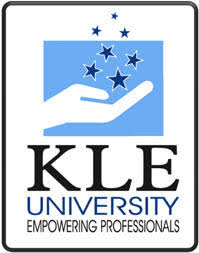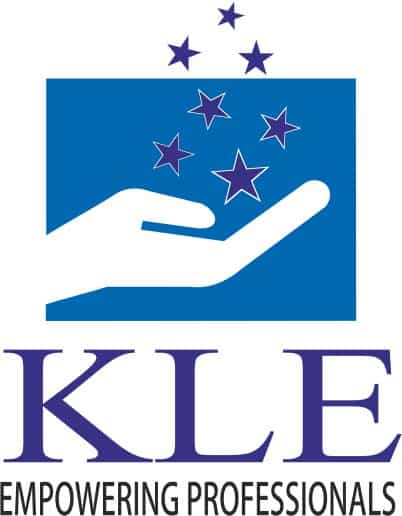Latest Applications Open 2024:
BCECEB conducts the BCECE Entrance Exam for admission into Engineering, Pharmacy, and Agriculture. BCECE released an official Syllabus for admission into Engineering, Pharmacy, and Agriculture. The Chemistry syllabus for the Bihar Combined Entrance Competitive Examination (BCECE) is an integral part of this competitive exam, which determines eligibility for various undergraduate programs in Bihar. This syllabus covers a wide spectrum of topics, including inorganic chemistry, organic chemistry, and physical chemistry.
The Syllabus consists of Physics, Chemistry, Biology, and Mathematics. It assesses candidates’ knowledge of chemical concepts, reactions, and principles, aiming to gauge their proficiency in this crucial scientific field. A strong understanding of these topics is essential for BCECE aspirants, as it impacts their performance in the examination and influences their prospects of gaining admission to prestigious courses in the state of Bihar.
Here, we will mention the complete BCECE 2024 Syllabus for Chemistry. The BCECE Exam is done in one phase. Candidates can also check the BCECE 2024 Physics, Mathematics, and Biology Syllabus.
BCECE 2024 Chemistry Syllabus – Available
BCECE 2024 Chemistry Syllabus is available here to download. Click to Download Syllabus PDF.
Some Basic Concepts of Chemistry
General Introduction: Importance and scope of chemistry. A historical approach to the particulate nature of matter, laws of chemical combination, Dalton’s atomic theory, the concept of elements, atoms and molecules, and Atomic and molecular masses. Mole concept and molar mass; percentage composition, empirical and molecular formula; chemical reactions, stoichiometry, and calculations based on stoichiometry.
Structure of Atom
Discovery of the electron, proton, and neutron and their characteristics; atomic number, Isotopes & Isobars; Thomson’s model and its limitation; Rutherford’s model and its limitations; Bohr’s model and its limitations, concept of shells and subshells, dual nature of matter and light, De Broglie’s relationship, Heisenberg uncertainty principle, concept of orbital’s, Quantum numbers, shapes of S.P. and D orbital’s, rules, for filling electrons in orbital Aufbau principle, Pauli exclusion principle and Hund’s rule, electronic configuration of atoms, the stability of half-filled and filled orbital’s.
Latest Applications For Various UG & PG Courses Open 2024
-
- Parul University | Admissions Open for All Courses 2024. Apply Now
- Chandigarh University | Admissions Open for All Courses 2024. Apply Now
- NIIT | Admissions Open for All Courses 2024. Apply Now
- KL University | Admissions Open for All Courses 2024. Apply Now
- Alliance UG | Admissions Open for All Courses 2024. Apply Now
- GD Goenka | Admissions Open for All Courses 2024. Apply Now
Classification of Elements and Periodicity in Properties
Significance of classification, a brief history of the development of the periodic table, modern periodic law and the present form of the periodic table, periodic trends in properties of elements – atomic radii, ionic radii, ionization enthalpy, electron gain enthalpy, electronegativity, valence.
Chemical Bonding and Molecular Structure
Valence electrons, ionic bond, covalent bond, bond parameters, Lewis structure, the polar character of a covalent bond, Covalent characters of Ionic bond, valence bond theory, resonance, the geometry of covalent molecules, VSEPR theory, concept of hybridization involving s, p and d orbital’s and shapes of some simple molecules, molecular orbital, theory of homonuclear diatomic molecules (qualitative idea only). Hydrogen bonding.
States of Matter gases and liquids
Three states of matter, Intermolecular interactions, type of bonding, melting and boiling points. Role of gas laws in elucidating the concept of the molecule, Boyle’s law, Charle’s law, Gay Lussac’s law Avogadro’s law, Ideal behavior, empirical derivation of the gas equation. Avogadro’s number. Ideal gas equation. Derivation from ideal behavior, liquefaction of gases, critical temperature. Liquid State – Vapour pressure, viscosity, and surface tension (qualitative idea only, no mathematical derivations).
Thermodynamics
Concepts of system, types of systems, surroundings, work, heat, energy, extensive and intensive properties, state functions, First law of thermodynamics – internal energy and enthalpy, heat capacity and specific heat, measurement of? U and? H, Hess’s law of constant heat summation enthalpy of bond dissociation, combustion, formation, atomization, Sublimation, phase transformation, ionization, and solution. Introduction of entropy as a state function, free energy change for a spontaneous and non-spontaneous process, criteria for equilibrium.
Equilibrium
Equilibrium in physical and chemical processes dynamic nature of equilibrium, the law of mass action, the equilibrium constant, factors affecting equilibrium-Le Chatelaine’s principle; ionic equilibrium – ionization of acids and bases, strong and weak electrolytes, degree of ionization, the concept of pH. Hydrolysis of salts (elementary idea), buffer solutions, solubility product, common ion effect (with illustrative examples).
Redox Reactions
Concept of oxidation and reduction, redox reactions, oxidation number, balancing redox reactions, applications of redox reactions.
Hydrogen
Position of hydrogen in periodic table, occurrence, isotopes, preparation, properties and uses of hydrogen; hydrides – ionic, covalent and interstitial; physical and chemical properties of water, heavy water; hydrogen peroxide-preparation, reactions, and structure; hydrogen as a fuel.
s-Block Elements (Alkali and Alkaline earth metals)
Group 1 and Group 2 elements: General introduction, electronic configuration, occurrence, anomalous properties of the first element of each group, diagonal relationship, trends in the variation of properties (such as ionization enthalpy, atomic and ionic radii) trends in chemical reactivity with oxygen, water, hydrogen, and halogens; uses.
Preparation and properties of some important compounds
Sodium carbonate, sodium chloride, sodium hydroxide, and sodium hydrogen carbonate, biological importance of 24 sodium and potassium. Cao, CaCO3, and industrial use, lime and limestone. Biological importance of Mg and Ca.
Some p-Block Elements
General Introduction p-Block Elements Group 3 elements: General introduction, electronic configuration, occurrence, a variation of properties, oxidation states, trends in chemical reactivity, anomalous properties of the first element of the group; Boron-physical and chemical properties, some important compounds: borax, boric acids, boron hydrides. Aluminum: uses reactions with acids and alkalies.
Group 4 elements: General introduction, electronic configuration, occurrence, a variation of properties, oxidation states, trends in chemical reactivity, strange behavior of the first element, carbon-catenation, allotropic forms, physical and chemical properties, uses of some important compounds: oxides. Important compounds of Silicon and a few uses: Silicon tetrachloride, silicones, silicates, and zeolite. (Part-I)
Organic Chemistry
Some Basic Principles and Techniques: General introduction, qualitative and quantitative analysis methods, classification, and IUPAC nomenclature of organic compounds. Electronic displacements in a covalent bond: inductive effect, electromeric effect, resonance, and hyperconjugation. Hemolytic and heterolytic fission of a covalent bond: free radicals, carbocations, carbanions, electrophiles and nucleophiles, types of organic reactions.
Hydrocarbons
Classification of hydrocarbons: Alkanes – Nomenclature, isomerism, conformations (ethane only), preparation methods, physical properties, chemical reactions including halogenation, free radical mechanism, combustion, and pyrolysis. Alkenes – Nomenclature, the structure of double bond (ethane), geometrical isomerism, methods of preparation, physical properties, chemical reaction: addition of hydrogen, halogen, water, hydrogen halides (Markovnikov’s addition and peroxide effect), ozonolysis, oxidation, mechanism of electrophilic addition.
Alkynes – Nomenclature, the structure of triple bond (ethyne), methods of preparation, physical properties, chemical reactions, the acidic character of alkynes, addition reactions of hydrogen, halogens, hydrogen halides, and water. Aromatic hydrocarbons – Introduction, IUPAC nomenclature, Benzene: resonance, aromaticity: preparation methods, chemical properties. Mechanism of electrophilic substitution – nitration, sulphonation, halogenation, Friedel Craft’s alkylation, and acylation; directive influence of the functional group in mono-substituted benzene; carcinogenicity and toxicity.
Environmental Chemistry
Environmental pollution – Air, water, and soil pollution, chemical reactions in atmosphere smogs, major atmospheric pollutants: acid rain, ozone, and its reactions, effects of depletion of the ozone layer, greenhouse effect, and global warming – pollution due to industrial wastes, green chemistry as an alternative tool for reducing pollution, strategy for control of environmental pollution. * Solid State Classification of solids based on different binding forces: molecular, ionic covalent, and metallic solids, amorphous and crystalline solids (elementary idea), a unit cell in two-dimensional and three-dimensional lattices, calculation of density of unit cell, packing in solids, voids, number of atoms per unit cell in a cubic unit cell, point defects, electrical and magnetic properties.
Solutions
Types of solutions, expression of concentration of solutions of solids in liquids, the solubility of gases in liquids, solid solutions, colligative properties–relative lowering of vapor pressure, the elevation of Boiling Point, depression of freezing point, osmotic pressure, determination of molecular masses using colligative properties, abnormal molecular mass.
Electrochemistry
Redox reactions, conductance in electrolytic solutions, specific and molar conductivity variations of conductivity with concentration, Kohlrausch’s law, electrolysis and laws of electrolysis (elementary idea), dry cell-electrolytic cells and Galvanic cells; lead accumulator, EMF of a cell, standard electrode potential, Nernst equation and its application to chemical cells, fuel cells; corrosion.
Chemical Kinetics
Rate of a reaction (average and instantaneous), factors affecting rates of reaction; concentration, temperature, catalyst; order and molecularity of a reaction; rate law and specific rate constant, integrated rate equations and half-life (only for zero and first-order reactions); concept of collision theory (elementary idea, no mathematical treatment)
Surface Chemistry
Adsorption physisorption and chemisorption; factors affecting adsorption of gases on solids; catalysis: homogenous and heterogeneous, activity and selectivity: enzyme catalysis; colloidal state: the distinction between true solutions, colloids, and suspensions; lyophilic, lyophobic, multimolecular and macromolecular colloids: properties of colloids; Tyndall effect, Brownian movement, electrophoresis, coagulation; emulsion – types of emulsions.
General Principles and Processes of Isolation of Elements
Principles and methods of extraction – concentration, oxidation, reduction electrolytic method, and refining; occurrence and principles of extraction of aluminum, copper, zinc, and Iron.
p-Block Elements
Group – 5 elements: General introduction, electronic configuration, occurrence, oxidation states, trends in physical and chemical properties; nitrogen – preparation, properties and uses; compounds of nitrogen: preparation, properties and uses; compounds of nitrogen: preparation and properties of ammonia and nitric acid, oxides of nitrogen (structure only); Phosphorous-allotropic forms; compounds of phosphorous: preparation and properties of phosphine, halides (PCl3, PCl5) and oxoacids (elementary idea only).
Group – 6 elements: General introduction, electronic configuration, oxidation states, occurrence, trends in physical and chemical properties; dioxygen: preparation, properties and uses; simple oxides; Ozone, Sulphur-allotropic forms; compounds of sulfur: preparation, properties and uses of sulfur dioxide; sulphuric acid: industrial process of manufacture, properties, and uses, oxoacids of sulfur (structures only).
Group – 7 elements: General introduction, electronic configuration, oxidation states, occurrence, trends in physical and chemical properties; compounds of halogens; preparation, properties and uses of chlorine and hydrochloric acid, interhalogen compounds, oxoacids of halogens (structures only).
Group – 8 elements: General introduction, electronic configuration. Occurrence, trends in physical and chemical properties, uses. (Part-II)
d- and f- Block Elements
General introduction, electronic configuration, occurrence and characteristics of transition metals, general trends in properties of the first-row transition metals – metallic character, ionization enthalpy, oxidation states, ionic radii, color, catalytic property, magnetic properties, interstitial compounds, alloy formation.
Preparation and properties of K2Cr2O7 and KMnO4. Lanthanoids – electronic configuration, oxidation states, chemical reactivity, and lanthanoid contraction. Actinoids – Electronic configuration, oxidation states. Coordination Compounds Coordination Compounds – Introduction, ligands, coordination number, color, magnetic properties and shapes, IUPAC nomenclature of mononuclear coordination compounds, bonding; isomerism, the importance of coordination compounds (in qualitative analysis, extraction of metals and biological systems).
Haloalkanes and Haloarenes
Haloalkanes: Nomenclature, nature of C-X bond, physical and chemical properties, mechanism of substitution reactions.
Haloarenes: Nature of C-X bond, substitution reactions (directive influence of halogen for monosubstituted compounds only) Uses and environmental effects of – dichloromethane, trichloromethane, tetrachloromethane, iodoform, freons, DDT.
Alcohols, Phenols and Ethers Alcohols
Nomenclature, methods of preparation, physical and chemical properties (of primary alcohols only); identification of primary, secondary and tertiary alcohols; mechanism of dehydration, uses of methanol and ethanol. Phenols: Nomenclature, methods of preparation, physical and chemical properties, acidic nature of phenol, electrophilic substitution reactions, uses of phenols. Ethers: Nomenclature, methods of preparation, physical and chemical properties, uses. Aldehydes, Ketones, and Carboxylic acids
Aldehydes and Ketones
Nomenclature, nature of carbonyl group, methods of preparation, physical and chemical properties mechanism of nucleophilic addition, the reactivity of alpha hydrogen in aldehydes; uses. Carboxylic Acids: Nomenclature, acidic nature, methods of preparation, physical and chemical properties; uses.
Organic Compounds containing Nitrogen Amines
Nomenclature, classification, structure, methods of preparation, physical and chemical properties, uses, identification of primary, secondary and tertiary amines. Cyanides and Isocyanides – will be mentioned at relevant places in context. Diazonium salts: Preparation, chemical reactions, and importance in synthetic organic chemistry. Biomolecule s Carbohydrates – Classification (aldoses and ketoses), monosaccharides (glucose and fructose), oligosaccharides (sucrose, lactose, maltose), polysaccharides (starch, cellulose, glycogen); importance. Proteins – Elementary idea of a-amino acids, peptide bond, polypeptides proteins, primary structure, secondary structure, tertiary structure, and quaternary structure (qualitative idea only), denaturation of proteins; enzymes. Vitamins – Classification and functions. Nucleic Acids: DNA & RNA.
Latest Applications For Various UG & PG Courses Open 2024
-
- Parul University | Admissions Open for All Courses 2024. Apply Now
- Chandigarh University | Admissions Open for All Courses 2024. Apply Now
- NIIT | Admissions Open for All Courses 2024. Apply Now
- KL University | Admissions Open for All Courses 2024. Apply Now
- Alliance UG | Admissions Open for All Courses 2024. Apply Now
- GD Goenka | Admissions Open for All Courses 2024. Apply Now
Polymers
Classification – natural and synthetic polymerization methods (addition and condensation), copolymerization. Some important polymers are natural and synthetic, like polythene, nylon, polyesters, bakelite, and rubber.
Chemistry in Everyday Life
- Chemicals in medicines – analgesics, tranquilizers, antiseptics, disinfectants, antimicrobials, and fertility drugs, antibiotics, antacids, antihistamines.
- Chemicals in food – preservatives, artificial sweetening agents.
- Cleansing agents – soaps and detergents, cleansing action.
If you have any other queries about BCECE Chemistry Syllabus 2024, you can write your queries in the comment box given below.

As a dedicated Biology Science graduate, I’m passionate about sharing the latest updates in national and state entrance exams through my blog. I aim to keep aspiring students informed about exam trends, important dates, and changes in syllabi. With a keen interest in education, I strive to offer valuable insights for students navigating the competitive landscape of entrance examinations and admission tests. Stay updated with me.


